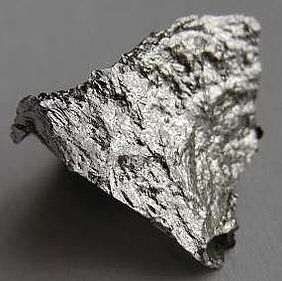Cobalt has been used as cathode material for a very long time as it offers high conductivity and stable structural stability throughout charge cycling. There are, however, two major drawbacks attached to the use of cobalt: the high cost and political instability in the regions where cobalt is mined. Therefore, scientists are putting a lot of effort into finding ways to minimise or eliminate the use of cobalt in batteries.
Now (2020), researchers at the Argonne National Laboratory have developed a battery that uses manganese, one of Earth’s most abundant metals, as cathode material. Their research is not only for the automotive industry but also for worldwide energy supply, as electric grids e.g. use battery storage for several energy resources like wind and solar.
The basis of this new design is based on a nickel-manganese-cobalt (NMC) cathode material designed by the same scientists that has already been launched onto the market. This cathode material is rich in lithium and has the potential to achieve a 50 to 100 percent increase in energy storage capacity over conventional cathode material. The scientists took the basic makeup of this battery design and concentrated their efforts on the development of a battery with increased lithium and manganese content, which could improve the energy density of a battery and its safety while reducing costs. Their research was dedicated to stabilizing manganese-rich cathode structures and surfaces and paid particular attention to composite materials with intergrown layered and spinel components. Its aim was to get greater insight into their electrochemical properties of batteries in terms of capacity, energy, and cycle-life in cells with metallic lithium, graphite, and Li4Ti5O12 anodes. These layered-spinel cathodes showed great potential as alternatives to highly nickel-rich electrode compositions, which bodes well for continued advances.
Scientists have long concentrated their efforts on discovering cheaper cathode materials. In 2017, scientists developed materials that used iron phosphate as a constituent element in place of cobalt. This new cathode material for lithium iron phosphate rechargeable batteries was capable of achieving high voltages that could only be reached by cobalt-based materials in the past. More specifically, the scientists successfully synthesized lithium iron pyrophosphate (Li5.33Fe5.33(P2O7)4). This phosphate-based material had a voltage of 3.8 V, comparable to that of existing cobalt-based materials.
In 2019, scientists created a design which used a cobalt and nickel-free cathode material, as well as a safe liquid electrolyte with a high flash point. This combination of the cathode and electrolyte could suppress lithium metal dendrites during charging, thus reducing flammability, which was widely considered a significant drawback for the use of lithium metal as an anode material. The batteries were found to surpass the capabilities of lithium-ion batteries in a number of individual categories including lower costs, faster charging time, higher power and energy density, strong energy efficiency and low flammability.
There are several advantages to using manganese as cathode material: a battery with a manganese-rich cathode is much cheaper and also safer than one with high nickel concentrations. Unfortunately, improving one or two aspects usually involves deteriorating another aspect. In this case, increasing the manganese and lithium content decreased the stability of the cathode, changing its performance over time.
This new approach to cathode materials for batteries was born out of the need to satisfy the demand for energy storage and find environmentally friendly, safe, inexpensive alternatives to commonly used cathode materials. With manganese scientists might have found a suitable candidate.
